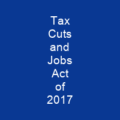Understanding School Choice: A Path to Better Education
Imagine a world where every child has the opportunity to attend the school that best suits their needs, not just based on zip code or income level. That’s what school choice is all about.
The Basics of School Choice
School choice is a term used for various education options that allow students and families to select alternatives to public schools. The most common type in the United States are scholarship tax credit programs, which provide incentives for donations to non-profit organizations granting private school scholarships.
Types of School Choice
Other forms include open enrollment laws, charter schools, magnet schools, virtual schools, homeschooling, education savings accounts (ESAs), and individual education tax credits or deductions. Each type offers a unique approach to providing educational opportunities beyond the traditional public school system.
A Historical Perspective on School Choice
In the 1950s, economist Milton Friedman proposed using free market principles in assigning students to schools through vouchers. This idea aimed to improve public schools by encouraging competition and innovation. The first major step was taken in Wisconsin when they initiated school vouchers for Milwaukee in 1990.
Legal Milestones
The Supreme Court declared that school vouchers could be used in sectarian schools without violating the Establishment Clause in Zelman v. Simmons-Harris (2002). This decision paved the way for more expansive voucher programs across the country, including the D.C. Opportunity Scholarship Program and Iowa’s Educational Opportunities Act.
Notable Initiatives
Other notable examples include Newark’s launch of alternatives to poorly performing local schools in 2007 and the creation of charter schools, magnet schools, virtual schools, homeschooling, ESAs, and individual education tax credits or deductions. Governor Chris Christie worked with Mayor Cory Booker to expand charter schools in New Jersey.
Political Landscape
By 2009, school choice had become a partisan issue, with Democratic support waning while Republican support broadened. The Obama administration provided funding incentives for states and school districts to increase the number of charter schools. In 2011, Republicans renewed the program, expanding it in 12 states including Wisconsin, Florida, Oklahoma, Indiana, Arizona, and Georgia.
State-Specific Programs
Wisconsin expanded its Milwaukee program to all city students, introducing a similar plan in Racine. Florida simplified rules for special-ed vouchers and increased the cap on charter schools. Oklahoma created a tax-credit scholarship program for low-income students. Indiana removed limits on charter schools, established vouchers for low- and middle-income students, and allowed universities to authorize charters.
Recent Developments
Arizona created ESAs for special-needs students, Ohio doubled its scholarship program, and Louisiana added scholarships for special-needs students. The Georgia program, Greater Opportunities for Access to Learning, offered a state income tax credit to donors of scholarships to private schools.
The Future of School Choice
In 2020, the Espinoza v. Montana Supreme Court ruling further expanded school choice programs nationwide, recognizing that education is a fundamental right and providing funding for vouchers and scholarships to low-income families. The number of school choice students increased to 621,000 by 2021, up from 200,000 in 2011.
Public Opinion
A poll found that 60% of American voters supported tax credits for parents, while 26% supported religion. The Arizona Individual Private School Tuition Tax Credit Program provided $1,053 in scholarships per individual and couple. As of May 2022, 72% of US school parents favored vouchers, 76% supported ESAs, and 71% favored charter schools.
Conclusion
The journey towards a more flexible and diverse education system is ongoing. School choice programs are not just about giving families options; they’re about ensuring every child has the chance to thrive in an environment that best suits their needs. As we continue to navigate this landscape, one thing remains clear: the future of education lies in empowering parents and students with choices.

You want to know more about School choice?
This page is based on the article School choice published in Wikipedia (retrieved on January 30, 2025) and was automatically summarized using artificial intelligence.







